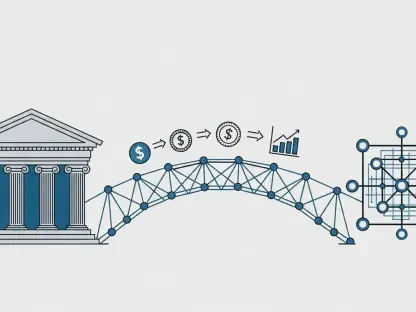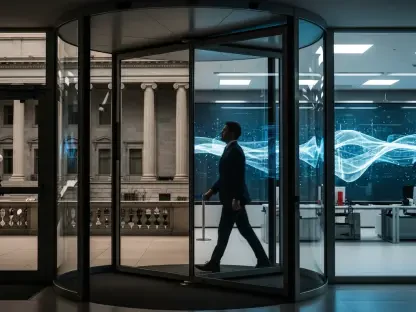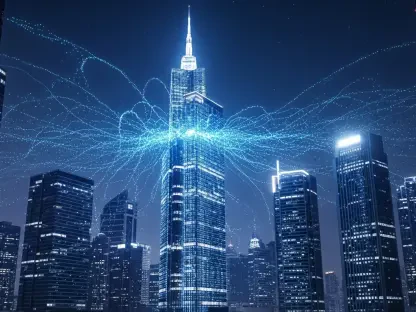The phase-out of the MetroCard, a pivotal component in New York City’s transit system since 1993, is set to reach its culmination with the full adoption of the OMNY (One Metro New York) contactless payment system by 2026. The MetroCard, which has served millions of commuters over the last three decades, will be retired, marking a shift towards more modern and efficient fare payment technology. OMNY promises numerous advantages, including enhanced speed, convenience, and the introduction of potential new promotions and loyalty programs, completely transforming the current fare payment landscape for the city’s transit systems.
The Rise of OMNY: A New Era of Fare Payment
Key Advantages of the OMNY System
OMNY, a groundbreaking contactless payment system, offers a range of advantages designed to improve the daily commute for New York City transit riders. By allowing payments through digital wallets, contactless credit and debit cards, and OMNY cards, this system eliminates the need for physical tickets or tokens. Commuters will find the system faster and more convenient as they can simply tap and go without the hassle of swiping a MetroCard or counting exact change. These technological advancements allow for seamless transactions, reducing delays during peak hours and contributing to a smoother overall rider experience.
In addition to operational efficiency, OMNY introduces potential new promotions, discounts, and loyalty programs that were not feasible with the MetroCard system. Automatic fare capping is one key feature set to revolutionize fare payment. This function ensures that once a rider reaches a certain spending threshold within a week, subsequent rides become free. This mechanism negates the need for purchasing weekly or monthly passes upfront, making it more economical and user-friendly. Such dynamic pricing models are expected to accommodate diverse rider needs and boost transit utilization.
Impact on Various Rider Demographics
OMNY aims to be inclusive by catering to the entire spectrum of the Metropolitan Transportation Authority’s (MTA) rider demographics, including Reduced-Fare customers, Fair Fares participants, Access-a-Ride users, and students. This inclusivity ensures that all New Yorkers, regardless of their particular transit needs, can benefit from the new system. For Reduced-Fare customers, OMNY will provide the same concessions available with a MetroCard but with the added convenience of contactless technology, removing the physical limitations and potential stigmas associated with traditional fare payment methods.
Fair Fares participants, who receive discounted travel options based on income, will find the new system beneficial, as OMNY automatically applies reductions without needing to juggle physical cards or tokens. Access-a-Ride customers, who rely on specialized transport services, will experience more seamless integration with their requirements. The MTA has ensured that students, who often represent a significant portion of daily commuters, will also be integrated into the OMNY system. Schools can now provide students with OMNY cards, ensuring access to convenient and modern fare payment methods.
The MetroCard’s Legacy and Phase-Out
Historical Context and Evolution
The MetroCard made its debut in 1993, replacing the cumbersome token system that had been in use since 1953. Its introduction streamlined fare collection and offered free transfers between subway lines and buses, which was not possible with tokens. The MetroCard facilitated the elimination of “two-zone” fares, which required separate payments for certain transit connections, bringing cost savings and convenience to countless commuters. Over the years, the MetroCard became an iconic part of New York City’s identity, synonymous with its bustling transit system.
However, technological advancements and the need for greater efficiency have driven the transition towards OMNY. The digital revolution in payment methods has made the MetroCard increasingly antiquated. The MTA has recognized the need to modernize, leading to the gradual introduction of OMNY across the city’s transit network. Retail partners began phasing out MetroCard sales in late 2024, and it is expected that by the fall of 2025, MetroCards will no longer be available for purchase. This transition requires significant changes in infrastructure, including the installation of OMNY vending machines at every subway station.
Transition and Future Implications
As the MetroCard system is phased out, the MTA has put measures in place to assist riders with their remaining balances. Customers with leftover balances on their MetroCards can visit specified locations where they can transfer balances to an OMNY account or receive reimbursements. Information on these processes is readily available to ensure a smooth transition for all affected riders. This effort highlights the MTA’s commitment to customer service even amidst significant infrastructural changes.
The transition to OMNY is expected to yield substantial cost savings for the MTA. The agency estimates savings of approximately $20 million per year by eliminating costs associated with MetroCard production, distribution, and maintenance. Reduced expenses related to vending machine repairs and cash handling further contribute to these savings. These funds can then be redirected towards improving transit services, upgrading infrastructure, and enhancing the overall customer experience.
Looking Forward: The Future of New York City Transit
Transformative Benefits and Innovations
The adoption of the OMNY contactless payment system signifies a forward-looking approach to public transit management. By incorporating cutting-edge technology, the MTA is not only offering convenience and efficiency to its riders but is also laying the groundwork for future innovations. Real-time data collection and analysis through OMNY can provide insights into rider behavior, allowing the MTA to make informed decisions about service adjustments and improvements. This technology-driven approach can lead to more efficient resource allocation and better service delivery.
Additionally, the potential for future integrations with other transportation services, such as bike-sharing and ride-hailing, could further streamline urban mobility. OMNY could eventually become a central component of a comprehensive transportation network in New York City, offering unified payment solutions across various modes of transport. The overarching goal is to create a seamless and interconnected transit experience that meets the evolving needs of city dwellers.
Final Thoughts
The phase-out of the MetroCard, a key part of New York City’s transit system since 1993, will be completed by 2026 with the full adoption of the OMNY (One Metro New York) contactless payment system. For nearly thirty years, the MetroCard has been an essential tool for millions of daily commuters. Its retirement will mark a significant shift towards modern fare payment technology. OMNY offers many benefits, such as improved speed and convenience. This new system will likely introduce innovative promotions and loyalty programs, fundamentally transforming how people pay for transit in New York City. By moving to a more advanced and user-friendly system, the city aims to streamline the commuting experience for residents and visitors alike. The shift to OMNY reflects a broader trend in public transportation systems across the globe, where contactless payment is becoming the norm. As New Yorkers transition to this new method, they can expect greater efficiency and possibly new features that enhance their daily commutes.









